Pet Spotlight/Case Study: A Kitty with Blisters
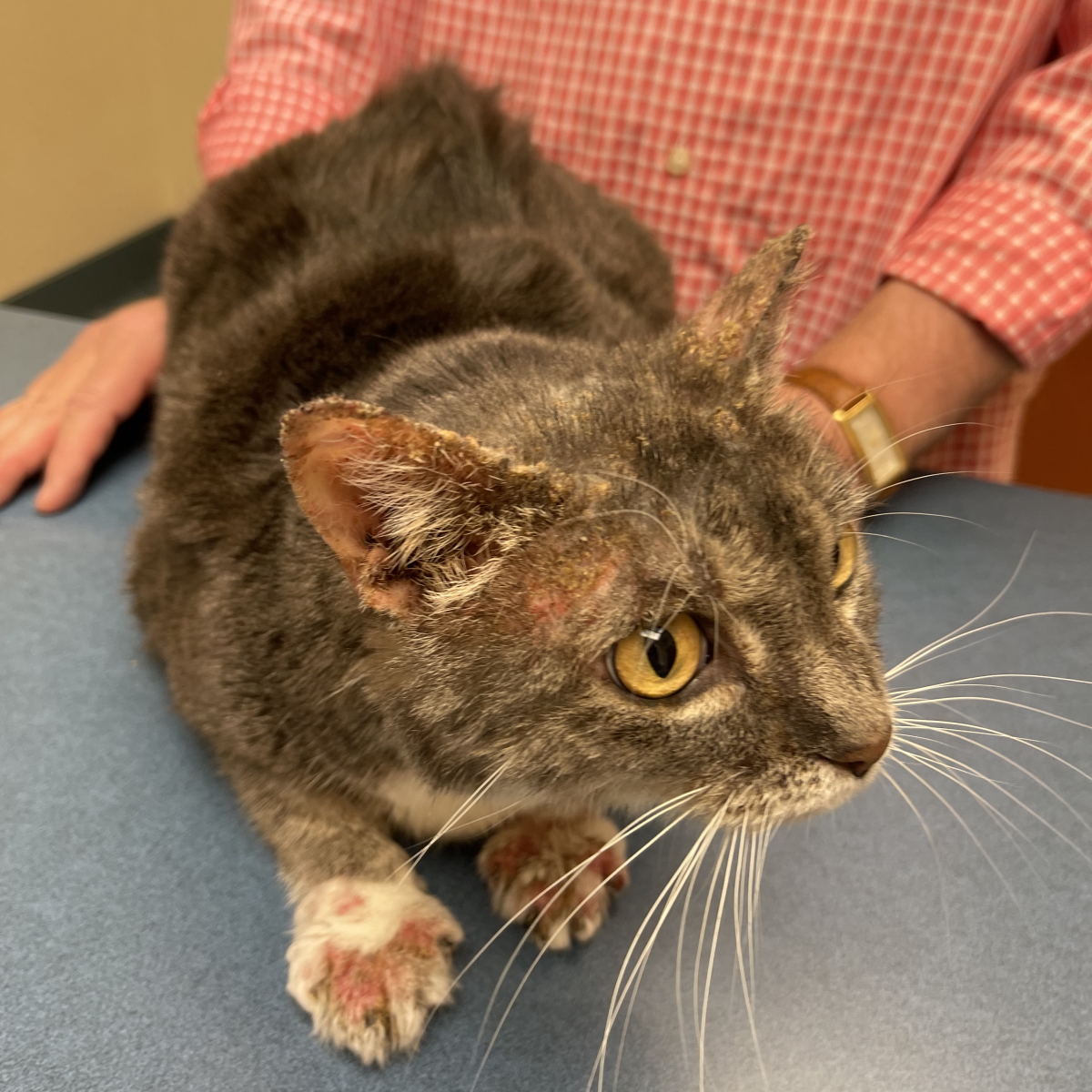
This is Athena on the day she first came to ADRC. She had thinning of the hairs on the face and ears with yellow crusts noted at the base of the ear and ear margins.
Athena is a 6-year-old domestic short haired cat with a history of diffuse yellow raised crusts on her skin, ear margins, and paws. Her paws were swollen and painful to walk on. She reportedly was not using her litter box, had a decreased appetite, and overall was not feeling well.
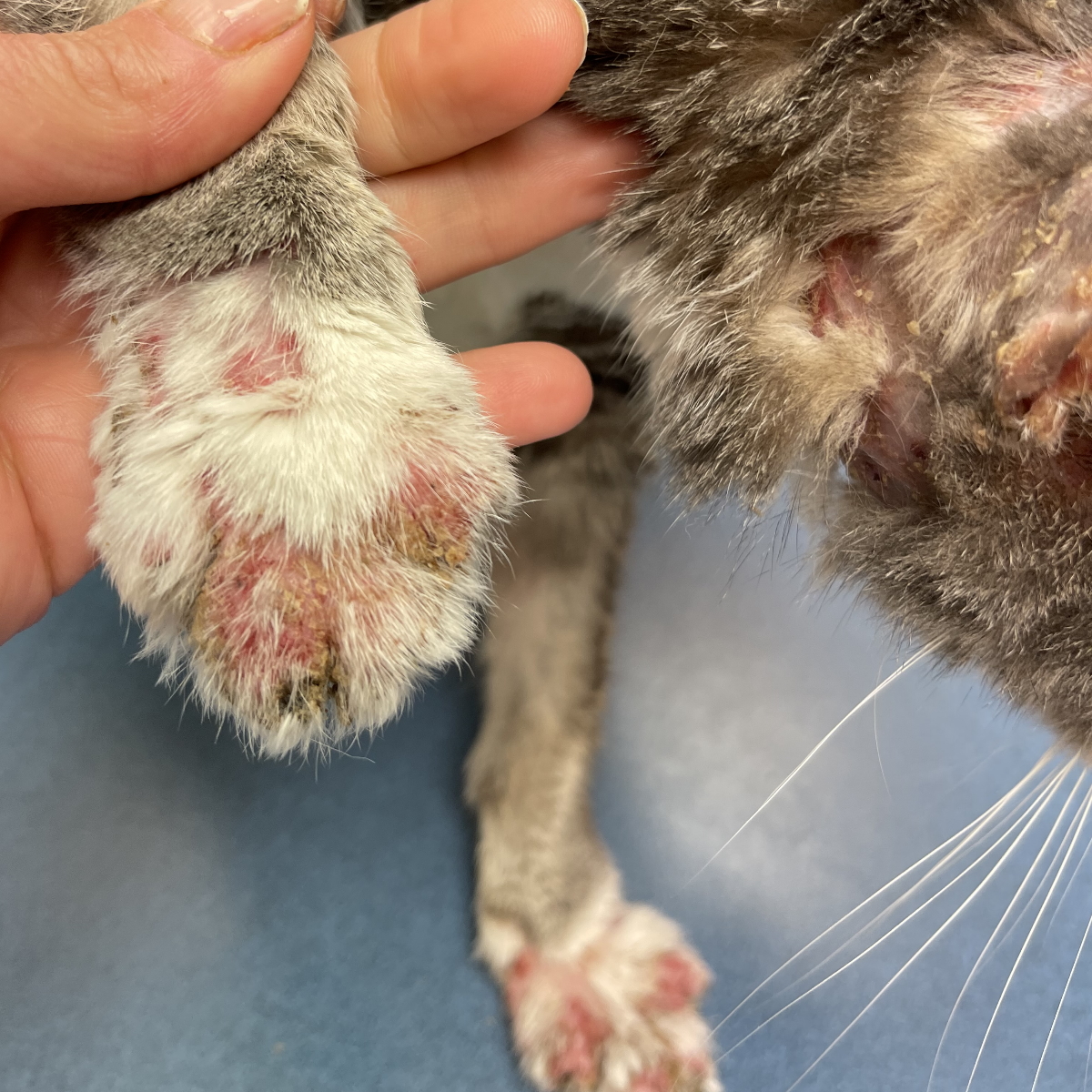
Athena’s paws were swollen, red, with crusts noted on the surface.
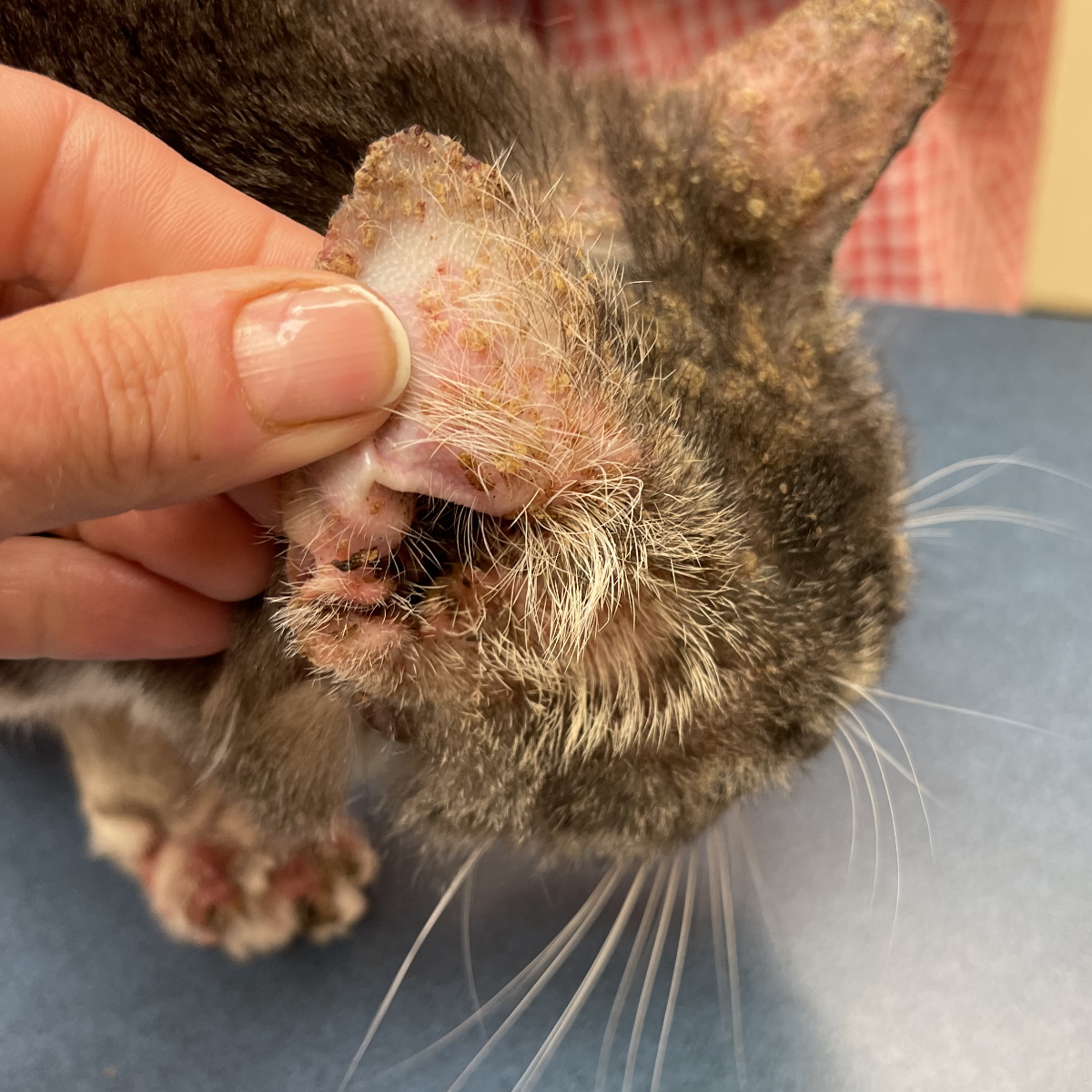
Athena’s ears had yellow crusts noted on the ear and ear margins.
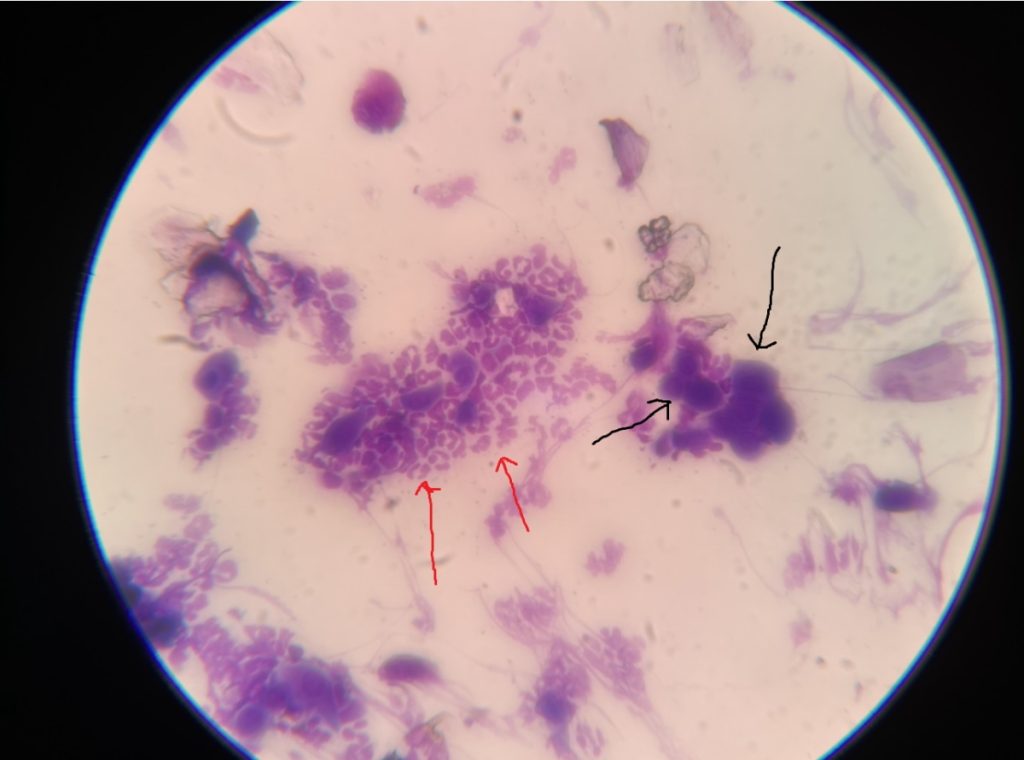
Athena’s skin cytology revealed several clusters of neutrophils (red arrows) and epithelial acantholytic keratinocytes (black arrows).
The changes seen on cytology supported the diagnosis of Pemphigus Foliaceus. It is always best to also have a biopsy to confirm this diagnosis. Pemphigus Foliaceus is an autoimmune skin disease that has been documented in people, dogs, cats, horses, and other mammals. This condition is caused by self/autoantibodies that target the molecule desmoglein in the skin. This molecule holds the top layer of the skin (the epidermis) together.
When antibodies target desmoglein, transient blisters form on the skin. This blister rapidly ruptures and becomes a small, crusted lesion. We do not know what triggers this response in cats (or dogs). We are unable to predict how long we will need to treat. Most patients require treatment for life. This condition requires immunosuppressive therapy such as steroids to get the condition into remission and to find the lowest dose needed to maintain remission. Other immunosuppressive therapy such as cyclosporine has been used with some success.
After starting therapy Athena’s skin greatly improved. She is overall feeling better!
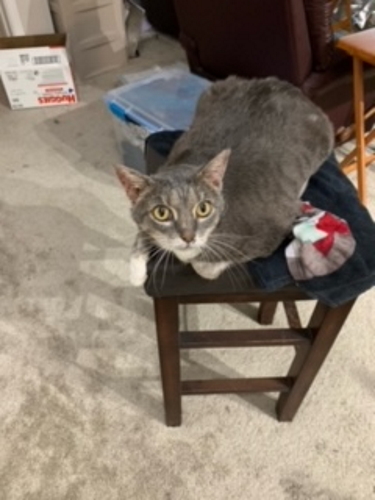
Athena after starting prescribed therapy.
Do you know someone whose pet may need our help? Please spread the word by sharing this with your family and friends. Thank you!
- Aug, 09, 2022
- Case Studies

